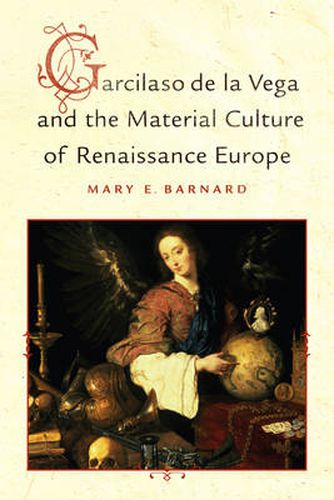Readings Newsletter
Become a Readings Member to make your shopping experience even easier.
Sign in or sign up for free!
You’re not far away from qualifying for FREE standard shipping within Australia
You’ve qualified for FREE standard shipping within Australia
The cart is loading…






Garcilaso de la Vega and the Material Culture of Renaissance Europe examines the role of cultural objects in the lyric poetry of Garcilaso de la Vega, the premier poet of sixteenth-century Spain. As a pioneer of the new poetry of Renaissance Europe, aligned with the court, empire, and modernity, Garcilaso was fully attuned to the collection and circulation of luxury artefacts and other worldly goods. In his poems, a variety of objects, including tapestries, paintings, statues, urns, mirrors, and relics participate in lyric acts of discovery and self-revelation, reveal memory as contingent and unstable, expose knowledge of the self as deceptive, and show how history intersects with the ideology of empire.
Mary E. Barnard’s study argues persuasively that the material culture of early sixteenth-century Europe embedded within Garcilaso’s poems offers a key to understanding the interplay between objects and texts that make those works such vibrant inventions.
$9.00 standard shipping within Australia
FREE standard shipping within Australia for orders over $100.00
Express & International shipping calculated at checkout
Garcilaso de la Vega and the Material Culture of Renaissance Europe examines the role of cultural objects in the lyric poetry of Garcilaso de la Vega, the premier poet of sixteenth-century Spain. As a pioneer of the new poetry of Renaissance Europe, aligned with the court, empire, and modernity, Garcilaso was fully attuned to the collection and circulation of luxury artefacts and other worldly goods. In his poems, a variety of objects, including tapestries, paintings, statues, urns, mirrors, and relics participate in lyric acts of discovery and self-revelation, reveal memory as contingent and unstable, expose knowledge of the self as deceptive, and show how history intersects with the ideology of empire.
Mary E. Barnard’s study argues persuasively that the material culture of early sixteenth-century Europe embedded within Garcilaso’s poems offers a key to understanding the interplay between objects and texts that make those works such vibrant inventions.